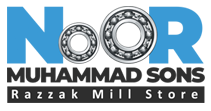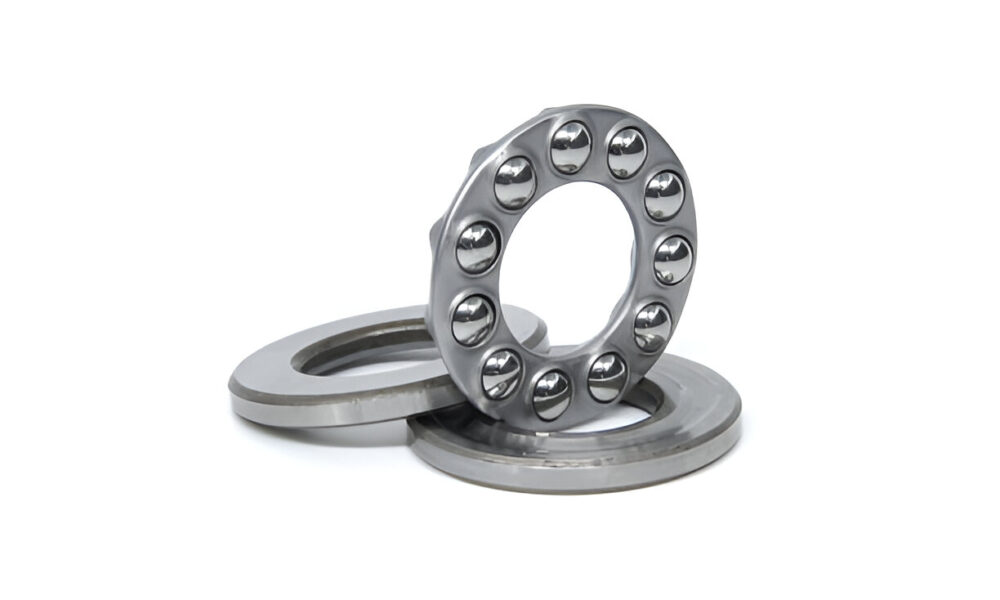When it comes to industrial machinery, small components often make the biggest difference. Among these essential parts, thrust bearing play a crucial role in ensuring that machines run smoothly and reliably. Though they might appear simple, their function is anything but minor. In this article, we’ll break down thrust bearings in the simplest way possible — covering their types, uses, and maintenance practices.
What Is a Thrust Bearing?
A thrust bearing is a special type of rotary bearing designed to handle axial loads — the forces that act along the axis of a shaft. Unlike ball bearings or roller bearings that primarily manage radial loads, thrust bearings are built to withstand pressure coming in a straight line through the shaft.
These bearings reduce friction between moving surfaces while allowing smooth rotation under heavy axial pressure. That’s why thrust bearings are often found in applications where stability, balance, and load-carrying capacity are essential.
Types of Thrust Bearings
Thrust bearings come in several designs, each with a specific purpose. Choosing the right type depends on the operating speed, load, and the application environment. Let’s look at the most common types:
1. Thrust Ball Bearings
Best for: Low-speed applications with lighter axial loads.
Examples: Automotive steering systems, vertical shafts, and household appliances.
How they work: These bearings use steel balls placed between washers (raceways), allowing them to handle axial loads from one or both directions.
2. Cylindrical Roller Thrust Bearings
Best for: Heavy axial loads with low to medium speeds.
Examples: Industrial gearboxes, crane hooks, and large machinery.
How they work: Rollers are used instead of balls, which increases load capacity but limits speed.
3. Spherical Roller Thrust Bearings
Best for: Applications requiring both axial load handling and self-alignment.
Examples: Marine propeller shafts, construction equipment, and turbines.
How they work: Their spherical design allows them to tolerate shaft misalignment while carrying heavy loads.
4. Tapered Roller Thrust Bearings
Best for: Applications with a combination of axial and radial loads.
Examples: Automotive transmissions and heavy-duty gearboxes.
How they work: The tapered rollers distribute loads evenly, making them highly durable under complex load conditions.
Common Uses of Thrust Bearings
Thrust bearings are widely used across industries because they can manage axial loads while minimizing friction. Some common applications include:
- Automotive Industry: Steering systems, gear assemblies, and clutches.
- Marine Applications: Propeller shafts, rudders, and ship engines.
- Heavy Machinery: Excavators, cranes, and industrial presses.
- Energy Sector: Turbines, pumps, and hydroelectric equipment.
- Aerospace Industry: Jet engines and rotor systems where precision and stability are critical.
- Home Appliances: Ceiling fans, washing machines, and other rotating devices that need axial load support.
These examples show that a thrust bearing is not just limited to heavy industries but also plays a part in everyday machines.
Why Thrust Bearings Matter
Without thrust bearings, machines that handle axial loads would quickly wear out due to high friction and misalignment. The results would include:
- Increased noise and vibration
- Faster component wear and tear
- Reduced machine lifespan
- Costly downtime and repairs
In contrast, a high-quality thrust bearing ensures:
- Smooth operation even under heavy loads
- Reduced friction and energy loss
- Better machine efficiency
- Extended equipment life
Maintenance Tips for Thrust Bearings
Even though thrust bearings are designed to withstand significant stress, their performance depends heavily on how well they are maintained. Here are some essential practices:
- Regular Lubrication: Always use the correct grease or oil recommended for your bearing type. Proper lubrication reduces friction, prevents overheating, and minimizes wear. Avoid over-lubrication as it can cause excess heat buildup.
- Keep Bearings Clean: Contaminants like dirt, water, and chemicals can quickly damage bearing surfaces. Use protective seals and shields wherever possible.
- Avoid Overloading: Exceeding load ratings can cause permanent deformation, misalignment, or failure. Always select a bearing that matches the required load capacity.
- Monitor Noise and Vibration: Unusual sounds or vibration can indicate early damage. Use vibration analysis tools or schedule regular inspections.
- Correct Installation: Improper fitting can damage the bearing before it starts working. Always follow manufacturer’s guidelines and use proper mounting tools.
How to Choose the Right Thrust Bearing
When selecting a thrust bearing, consider the following factors:
- Load Type and Capacity: Determine if your machine needs light, medium, or heavy-duty axial support.
- Operating Speed: High-speed applications require bearings designed for minimal heat and friction.
- Alignment Needs: If shaft misalignment is common, go for spherical thrust bearings.
- Operating Environment: For marine or chemical industries, corrosion-resistant bearings are necessary.
Making the right choice not only improves machine performance but also reduces downtime and long-term costs.
Final Thoughts
Thrust bearing may be a small component, but its role in supporting axial loads and ensuring smooth operation is massive. From automobiles and turbines to household appliances, these bearings are everywhere — quietly making machines more efficient and reliable.
By understanding the types, uses, and maintenance practices of thrust bearings, engineers and technicians can maximize machine life and minimize breakdowns.
The next time you look at heavy machinery or even a simple ceiling fan, remember that a thrust bearing is working behind the scenes, ensuring that motion stays smooth and efficient.


